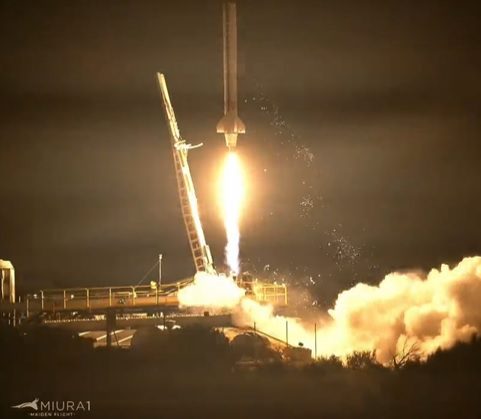Although Spanish launch firm PLD Space declared that its Miura 1 suborbital test rocket achieved “all technical objectives” on its maiden flight, in truth the flight did not achieve its planned altitude and was meant to have flown higher.
Miura 1’s debut launch took place at 0019 GMT on 7 October at the facilities of the El Arenosillo Experimentation Centre (CEDEA), owned by the Spanish National Institute for Aerospace Technology (INTA). During its flight, which lasted 306 seconds, Miura 1 reached apogee at an altitude of 46 km, just short of the 50 km goal. Although only slightly missing its mark, Miura 1’s target had already been truncated just before the flight from the 80 km originally planned. No information about the cause of the underperformance had been released at the time of writing.
The mission concluded with the rocket landing in the Atlantic Ocean in its intended location, but PLD Space was unable to recover Miura 1 after it landed laterally. Nevertheless, the Spanish launch company did fulfil its primary mission objectives related to engine thrust, trajectory tracking and launcher behaviour, while retiring most of the risk for future missions.

Miura 1 lift-off on suborbital atmospheric flight 1. Courtesy: PLD Space








